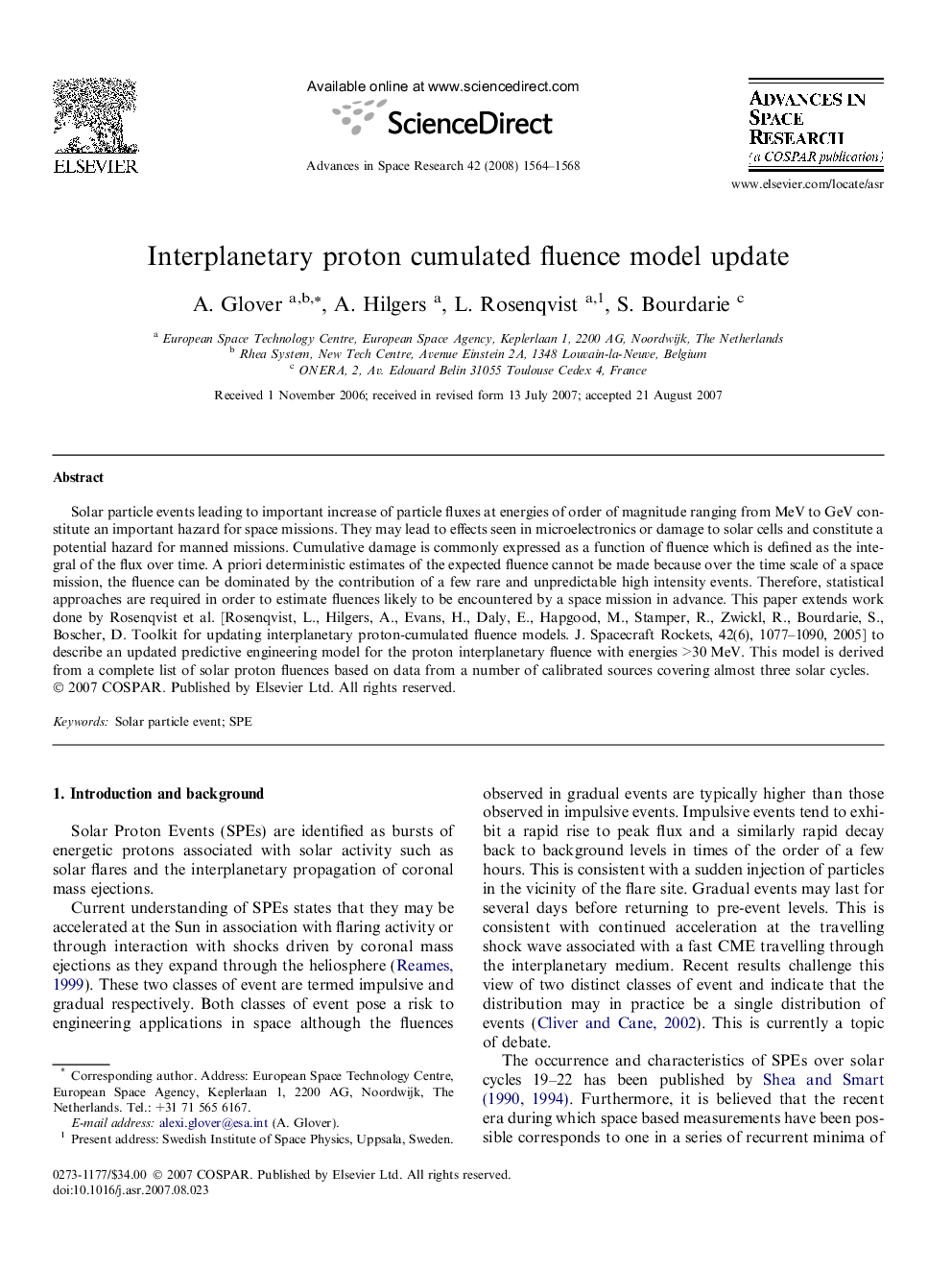| Article ID | Journal | Published Year | Pages | File Type |
|---|---|---|---|---|
| 1766035 | Advances in Space Research | 2008 | 5 Pages |
Solar particle events leading to important increase of particle fluxes at energies of order of magnitude ranging from MeV to GeV constitute an important hazard for space missions. They may lead to effects seen in microelectronics or damage to solar cells and constitute a potential hazard for manned missions. Cumulative damage is commonly expressed as a function of fluence which is defined as the integral of the flux over time. A priori deterministic estimates of the expected fluence cannot be made because over the time scale of a space mission, the fluence can be dominated by the contribution of a few rare and unpredictable high intensity events. Therefore, statistical approaches are required in order to estimate fluences likely to be encountered by a space mission in advance. This paper extends work done by Rosenqvist et al. [Rosenqvist, L., Hilgers, A., Evans, H., Daly, E., Hapgood, M., Stamper, R., Zwickl, R., Bourdarie, S., Boscher, D. Toolkit for updating interplanetary proton-cumulated fluence models. J. Spacecraft Rockets, 42(6), 1077–1090, 2005] to describe an updated predictive engineering model for the proton interplanetary fluence with energies >30 MeV. This model is derived from a complete list of solar proton fluences based on data from a number of calibrated sources covering almost three solar cycles.
